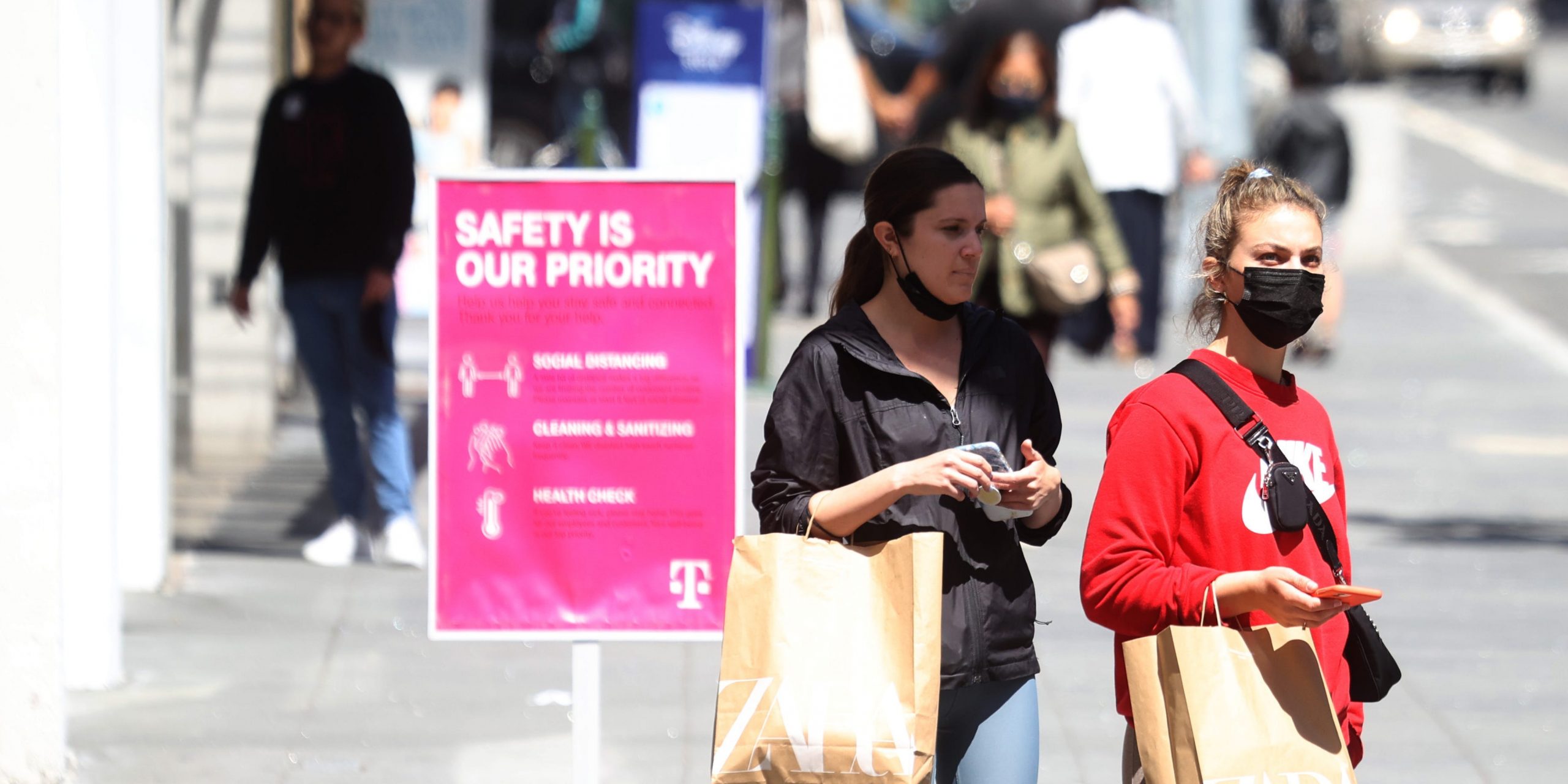
Justin Sullivan/Getty Images
- The PCE price index – a popular inflation gauge – rose to 3.5% from 1.7% in the first quarter.
- The measure signals that reopening and stimulus boosted demand, lifting prices at a nearly decade-high rate.
- The Fed expects inflation to climb but only temporarily, before fading to normal levels.
- See more stories on Insider's business page.
The inflation that economists and the Federal Reserve have been warning of for months has arrived.
The Personal Consumption Expenditures price index – among the most popular measures of nationwide price growth – rose in the first quarter to 3.5% from 1.7%, the Commerce Department said Thursday. The reading marks the second-fastest pace of price growth since 2011, surpassed only by a 3.7% rate in the third quarter of 2020.
Core PCE inflation, which leaves out volatile food and energy prices, rose to 2.3% in the first quarter from 1.3%.
The stronger inflation was largely attributed to the quarter's economic rebound. US gross domestic product grew at an annualized rate of 6.4% in the first three months of 2021, according to the Commerce Department. That rate signals the second-strongest quarter of expansion since 2003, surpassed only by the record-breaking surge seen in the third quarter of last year.
The quarter ending in March saw stimulus passed by former President Donald Trump and President Joe Biden drive a sharp increase in spending. Widespread vaccination and falling COVID-19 case counts also boosted economic activity as governments eased lockdowns and businesses reopened.
The uptick in price inflation mirrors a similar signal from the Consumer Price Index from earlier in April. The inflation gauge rose 0.6% from February to March, slightly exceeding economist forecasts. More remarkable was a 2.6% year-over-year gain that market the strongest jump in price growth of the pandemic era.
Inflation was at the center of the debate over new stimulus, with Republicans and even moderate Democrats warning that a colossal package could spark rampant price growth and create a new economic crisis.
On the surface, the latest data suggests those warnings were correct. Yet the Fed has long anticipated that any spike in inflation through the recovery would be "transitory" and quickly fade. For one, year-over-year measures of price growth are somewhat skewed by data from the first months of the pandemic, when initial lockdowns saw price growth turn negative. That dynamic, known as base effects, leaves a lower bar for the present-day readings to clear.
The pickup is also unlikely to reverse the decades-long trend of price growth landing below the Fed's target, according to Fed Chair Jerome Powell.
"An episode of one-time price increases as the economy reopens is not the same thing as, and is not likely to lead to, persistently higher year-over-year inflation into the future," the central bank chief said Wednesday. "It is the Fed's job to make sure that does not happen."
The Fed adjusted its framework in August to pursue inflation that averages 2% over time, as opposed to targeting steady price growth at a 2% rate. The change signals the central bank will allow inflation to run above the 2% threshold for some time as the country recovers. Powell has said that the low-inflation environment of the late 2010s suggest the Fed can run the economy hot in hopes of reaching maximum employment.
